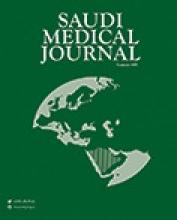Abstract
OBJECTIVE: To define the well-known variability in the effects of non-steroidal anti-inflammatory drugs and to search for predictors of such variability using an in vitro model.
METHODS: Polymorphonuclear leukocyte activity was measured by luminol-dependent chemiluminescence of the whole blood using barium sulphate as a stimulator. Blood was taken from 40 apparently healthy volunteers (22 males and 18 females; their age ranged from 20-50 years). Drugs (indomethacin 10ug/ml, aspirin 300ug/ml, ibuprofen 25ug/ml or diclofenac 8ug/ml) were added into the blood of each individual in vitro. The chemiluminescence was measured in a photon counting system.
RESULTS: There was a marked inter and intra individual variation in the chemiluminescence response to the 4 non-steroidal anti-inflammatory drugs, added in vitro. The variation exhibited a continuous pattern. No statistically significant correlation was found between the in vitro effect of one non-steroidal anti-inflammatory drug and the other 3 drugs, nor between the effect of each drug and factors like age, sex, weight, height, packed cell volume, hemoglobin percentage and white blood cell count. Subjects with hemoglobin-AS type (number = 9) responded mainly by enhancement to indomethacin and diclofenac. When the number of subjects rather than the average net effect was compared according to blood groups, those with blood group A showed chemiluminescence responses towards enhancement with indomethacin and diclofenac and blood group O with aspirin. A consistent pattern of enhancement and inhibition was evident; enhancements and inhibitions by any 2 drugs involve a seemingly constant proportion of subjects.
CONCLUSION: Luminol-dependent chemiluminescence responses of polymorphonuclear leukocyte activity could be a good in vitro model to study the variability in response to non-steroidal anti-inflammatory drugs. Characteristics of each individual are not able to predict the pattern of variability. Abnormal hemoglobin and the type of blood group seem to be an interesting area for research.
- Copyright: © Saudi Medical Journal
This is an open-access article distributed under the terms of the Creative Commons Attribution-Noncommercial-Share Alike 3.0 Unported, which permits unrestricted use, distribution, and reproduction in any medium, provided the original work is properly cited.






